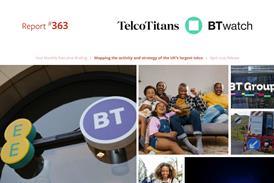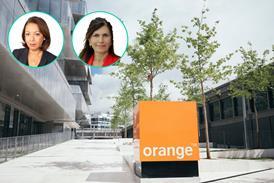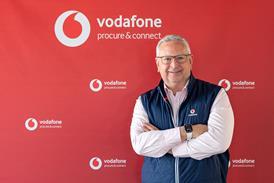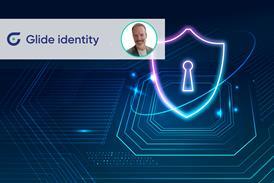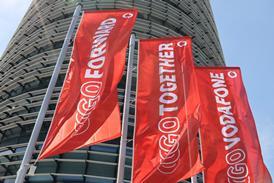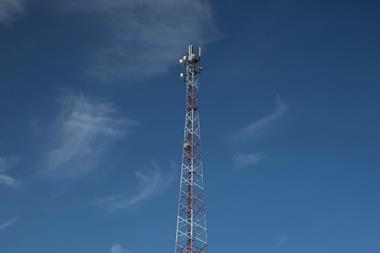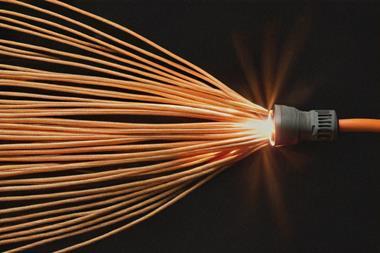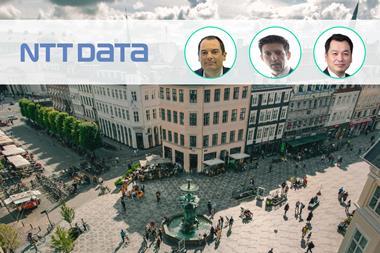- brown-iposs’ breakthrough CARAT solution leverages AI and digital twinning to reinvent RAN optimisation, bringing near real-time automation, significantly reducing resolution timeframes, and enhancing user experience.
- CARAT’s technology-agnostic approach helps operators navigate multi-vendor environments and minimise vendor lock-in, offering greater control and flexibility, especially in open, disaggregated network infrastructure.
- By focusing on data streams rather than data lakes, CARAT simplifies compliance and delivers speed. Actionable insights for network optimisation are accelerated, driving efficiency and empowering skilled teams.
- brown-iposs is exploring the potential of GenAI to further enhance protocol analysis and make intent-based optimisation a viable reality, through a pragmatic and cost-effective hierarchical approach to AI and machine learning in network management.
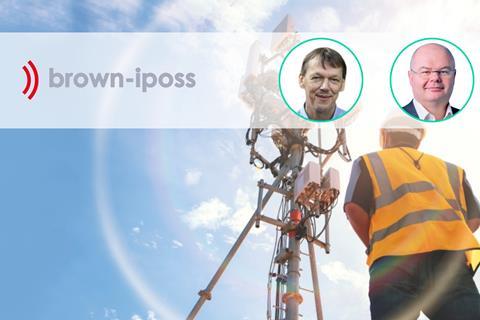
There is increasing expectation of instantaneous response to changing circumstances across networks in the digital era and this expectation of real-time operations is only growing as automation increases and the potential of AI is explored.
Obstructing this is a reality where many aspects of mobile network performance remain dependent on manual intervention, and where resolution timeframes can be measured in days or even weeks.
This can be particularly true around the radio area network (RAN) and there is a harsh irony that the virtualisation and openness of the modern multi-vendor environment can exacerbate the challenge of gathering and analysing the operations data needed to facilitate rapid and efficient fault resolution.
Managing the RAN is currently complex, reliant even ahead of resolution on extraction of data from multiple sources, batch imports, and vast data lakes. This is slow, labour intensive, and expensive.
It is also, fortunately, the area where Bonn, Germany-based RAN optimiser brown‑iposs is wrangling to make a material difference for operators, with the radio network specialist especially conscious of the major benefits in user experience that can be enabled through more responsive network optimisation.
brown-iposs’ answer to the mishmash of delay and complexity is to circumvent it entirely, simply not waiting for data to be batched and siloed, and so immediately advancing RAN automation into the era of near real‑time resolution.
“ There are problem areas in the RAN which are bigger than just optimising an app, so when we say we can resolve these that fast, it really is transformative. ”
Ian Ginn, Consultant, brown-iposs.
brown-iposs: it’s all in the name
brown‑iposs has its roots in the early years of the century and was a WiMAX pioneer, subsequently transitioning to Wi‑Fi and radio optimisation support for mobile operators. The name brown‑iposs is itself an acronym representing the company’s core focus of ‘BROadband Wireless Networks’ and ‘Investigations Planning Operation Support Systems’.
The radio network specialist has seen the key elements of its dual focus come together in recent years, as Wi‑Fi became of greater interest to operators and wireless network use cases evolved. As these started to converge around 2009–10, the business also took on the challenge of Big Data in relation to radio network failure classifications, and further increased its focus on radio access networks.
With its culture of early involvement in emerging technology, brown‑iposs took a keen early interest in open RAN solutions, recognising the competencies it brought for accessing and coordinating the network data that is key to ORAN success. “We worked a lot on measuring: it’s not only analysing, it’s also gathering data and bringing it as an input source into our solutions”, explains Bernd Schröder, Managing Director at brown-iposs.
5G private networks are also notable in the brown-iposs wheelhouse, including collaboration in Germany’s CampusOS initiative alongside the likes of Deutsche Telekom, Rohde & Schwarz and Siemens. Through this, it is supporting development of open programmable 5G local networks, with a specific focus on understanding how radio waves interact with the local environment, and undertaking protocol analysis across network layers to understand and address service performance issues. On a global level, as part of the 5G Alliance for Connected Industries and Automation (5G‑ACIA) brown-iposs is helping assess business, regulatory and technical aspects of 5G in the industrial domain.
CARAT focuses on fundamentals to deliver UX uplift
brown‑iposs has developed its new CARAT solution on two decades of foundational experience delivering RAN optimisation to Europe’s largest mobile players.
This includes multi‑vendor environments in the highly competitive German market, where network performance tables are eyed closely by end‑users, and network quality has been identified as the most significant driver of customer satisfaction.
What is new is the distillation of this experience into a solution developed as an API to be flexibly harnessed for customers, rather than a proposition tailored to specific workflows and environments. The value to operators of this open approach is considerable in Ginn’s view, and also twofold: “the RAN is the single most significant area of investment for mobile operators, and it is also their most valuable asset, and the goal of brown‑iposs with CARAT is to make a difference to both these perspectives”.
“ We’re moving problems which are often taking two weeks on average, and doing that in two hours. ”
Schröder.

Deployed on site and accessed by the operator through a ‘single pane of glass’ interface, CARAT fits somewhere between a plug‑and‑play offering and a managed service, explains Schröder, with customisation to address specific customer needs — “you need to understand the results and lead the actions from that: each operator will have its own optimisation strategy and so it’s important to adapt to them”.
The end‑goal, according to Ginn, is improving the network for end‑users: “optimisation can help in a lot of areas, such as power or efficiency, but what we’re really focused on is using optimisation to fix or improve the user experience”.
brown-iposs’ AI‑enhanced solution CARAT (or Classification and Root-Cause Analysing Tools) draws on digital twinning to analyse radio and other mobile access network activity from multiple internal and crowdsourced sources, both to support network optimisation and enhance user experience. While CARAT can support networks from 2G to 5G and beyond, its sweetspots are the increasingly multi-vendor public and private ORAN and vRAN mobile networks. Drawing on experience working with major European MNOs, data privacy restrictions are also nullified by not storing personally identifiable data. A further benefit of the API-interfaced solution is significant reduction in operators’ vendor lock-in risk due to CARAT’s inherent interoperability.
For speed and compliance, a data stream is better than a lake
brown‑iposs declares that CARAT is bringing the ability to stream key RAN management data to near real‑time, enabling operators to make observations and take action to resolve issues faster, ultimately improving user experience.
CARAT is intended to identify anomalies, and help provide resolution paths and next best action recommendations based on the root cause analysis that can be validated within the RAN. This is achieved through analysing network operations’ data streams from multiple sources that affect customer experience and, crucially, eliminate data that does not contribute to this objective. “That’s a very important feature”, notes Ginn, “and it contradicts the conception that you need to build data lakes as a key component of optimisation (and that the bigger lake the better)”.
A further standout of the CARAT approach is incorporation of network digital twinning for modelling and analysis. Schröder highlights that a range of twins are incorporated, for example, representing sessions of user equipment.

This means that live network performance can be analysed in relation to many different scenarios at the same time. For operators that need to know how different types of user equipment are performing in different parts of the network, “this solves a huge pain point”, according to Schröder.
Schröder notes that working with data directly from the network has significant benefits in terms of compliance, too, with relevant data extracted without user identifiability meaning there are no onerous privacy protection requirements to contend with like GDPR. Notably, brown‑iposs’ experience working in the German market, where the use of geolocation data is tightly regulated, has helped ensure that CARAT is well‑suited to capturing data that can be measured and analysed without conflicting with privacy.
Circumventing multi-vendor complexity and lock-in
Schröder emphasises that CARAT is technology‑agnostic.
This gives operators greater freedom in making strategic choices for network vendors, with CARAT offering the necessary toolset for introducing new partners flexibly, helping minimise concerns over adding further complexity and lock-in.
This aspect is becoming increasingly significant, according to Ginn, who has observed network environments where embrace of new open access solutions is adding uncertainty over how to optimise the resultant access network.
“ We’ve spoken to operators with multi‑vendor environments where one vendor may have clear processes and plans for optimisation tooling, but another vendor in the same network could have a big question mark hanging over its approach. ”
Ginn.
Schröder identifies another attribute that is particularly relevant as networks become disaggregated — clear accountability.
“ CARAT is effective in single-vendor environments as well, but more value is added in a multi‑vendor setting — critically, it can assign responsibilities, and that is essential when technology from multiple sources is in play. ”
Schröder.
Schröder also stresses that brown‑iposs’ approach can be applied to whatever configuration an operator chooses, whether a single-vendor open stack perhaps delivered by a system integrator, or an operator self‑managed multi‑vendor open RAN environment.
“ Since we are locking into the interface, and interface data, which is based on standardisation, we have a starting point where those choices do not matter. The flavour of open RAN implementation may differ but that is part of the initial learning phase and can be completed quickly. ”
Schröder.
The trend towards more open infrastructure is now well‑established, and Schröder sees this continuing, potentially driven by growing interest in the topic of AI RAN and the gradual consensus around 6G embracing a data-underpinned, disaggregated environment where open RAN may feature.
“Operators are drawn to open RAN to maintain control, independence and differentiation for their network, but managing optimisation with proprietary tools runs counter to that. However, we have a solution that means operators can follow the true open RAN story and gain that independence. ”
Ginn.
The ability to automate, or semi‑automate, network optimisation is also key to ensuring staff can maximise their potential, notes Ginn. Making the most of skilled teams is particularly relevant in the RAN field, with the latest specialist engineering knowledge scarce and new recruits difficult to find. This is putting an onus on operators to ensure resources are focused on areas that remain beyond the reach of automation, bolstering efficiency and ensuring job satisfaction remains high.
Next stop for AI-enabled network automation: trust (then scale)
Trust is fundamental to brown‑iposs’ vision, according to Schröder.
The levels of automation that can be achieved with CARAT’s assistance are already significant, with brown‑iposs saying that insights garnered from early use have bred confidence that more than 90% of RAN anomalies can be classified and referred for resolution automatically through the solution.
AI plays a key role in these gains, enabling faster classification of network issues, proposed steps for resolution, and outcome validation. There are already use cases for CARAT that brown‑iposs says can be fully automated and managed by AI, with Schröder citing capabilities within its solutions to deliver closed-loop tilt optimisation (adjusting the RAN field to create material network gains without the need for human interaction).
brown‑iposs does not expect operators to leap in at the deep end, however, instead assuming that levels of automation will iterate as operators become familiar and comfortable with CARAT’s capabilities. “This is a process which is more limited by trust than technical possibilities”, says Schröder.
A natural venue to kick off could be in the lab, he suggests, with ongoing consideration of open RAN technologies a perfect opportunity — “this naturally leads into limited location trials, and then up to nationwide deployments and even further”.
Even an incremental approach with gradual scaling will significantly accelerate the timeframe within which problems can be identified, dramatically reducing mean time to resolution and positively impacting user experience, with potential for much more as operator confidence builds.
“The solution is no longer the bottleneck. The ability to scale will really be a question of trust [and ambition], and not architecture. ”
Schröder.
GenAI on the brown‑iposs radar
brown‑iposs is evaluating the potential of generative AI within its solutions on two fronts. “It’s a big topic for us”, says Schröder. On the technical side, examination of GenAI’s role in creating more sophisticated protocol analysis is underway, with potential for intent‑based optimisation also being assessed.
This would result in CARAT understanding free‑text or natural language-formulated optimisation targets and automatically adjusting the optimisation strategy. “For example, if the operator prompt is ‘I want to improve in the northwest area first’, we can say ‘OK: let’s do it’, Schröder says. The potential could be transformative, says Ginn — “It could enable operators to change policy on the fly”.
Schröder emphasises that there will likely remain a place for different layers of AI and machine learning in ongoing classification and optimisation. Factoring in the varying levels of cost and energy consumption across emerging technologies, brown-iposs foresees a hierarchical approach.
“ So far, GenAI has been expensive, so we envisage using GenAI approaches to better steer the underlying, less expensive, machine learning approaches, and under that the other less expensive pattern recognition approaches to get the most effective, efficient results. ”
Schröder.
Topics
- 2G (GSM, 2.5G)
- 5G
- 6G
- AI (artificial intelligence, machine learning)
- API
- Automation
- Big data
- Customer/User experience (CX/UX)
- Data
- Data science (analytics)
- Digital twins
- Germany
- Industry Voice
- Multi-vendor (interoperability)
- Network & Infrastructure
- Open RAN (ORAN)
- Open/disaggregated networking
- Private Networks
- RAN (radio access network)
- Technology
- Virtualisation (SDN, SD-WAN, NFV, VNF, VRAN)
- Wi-Fi (WLAN)



